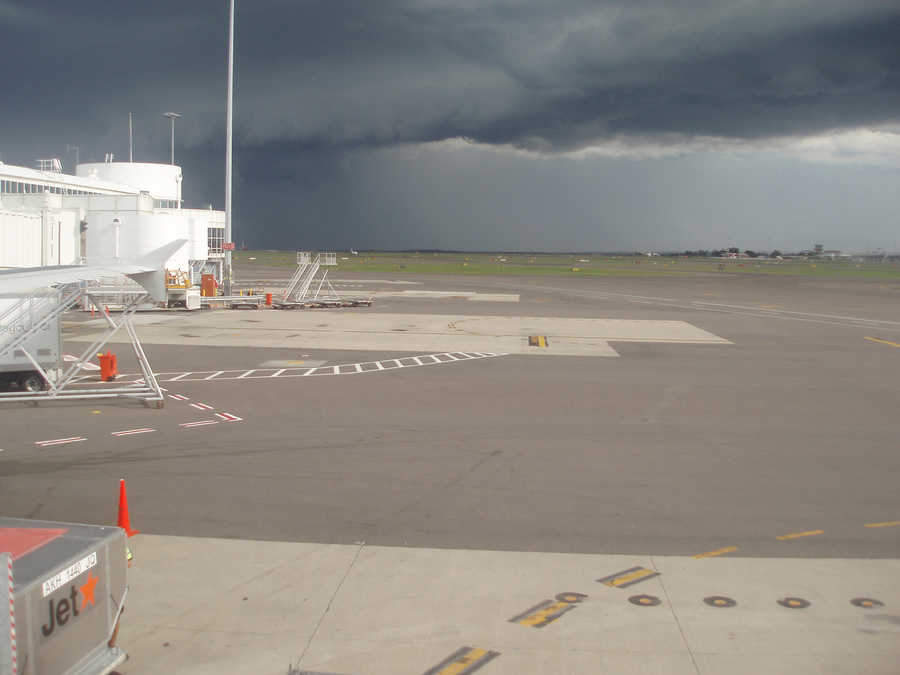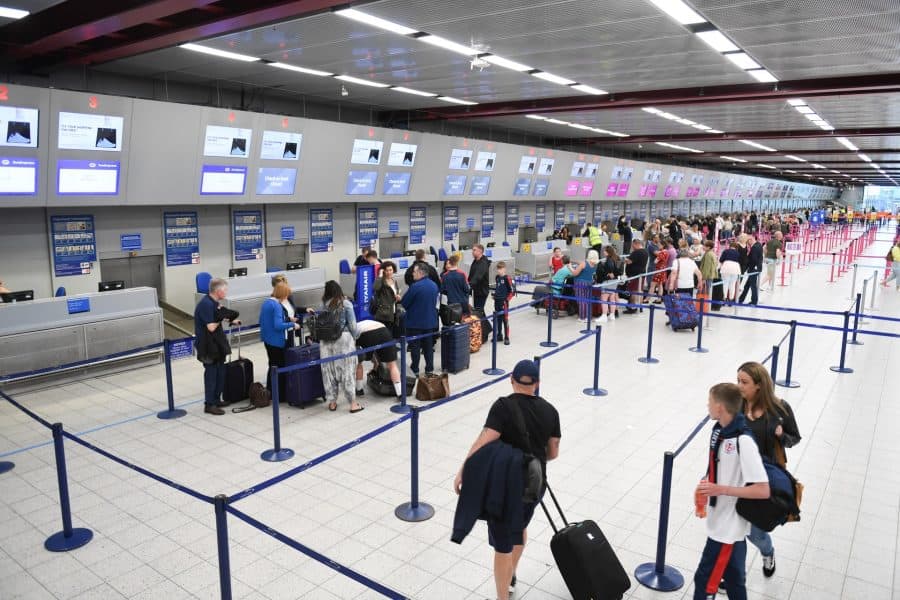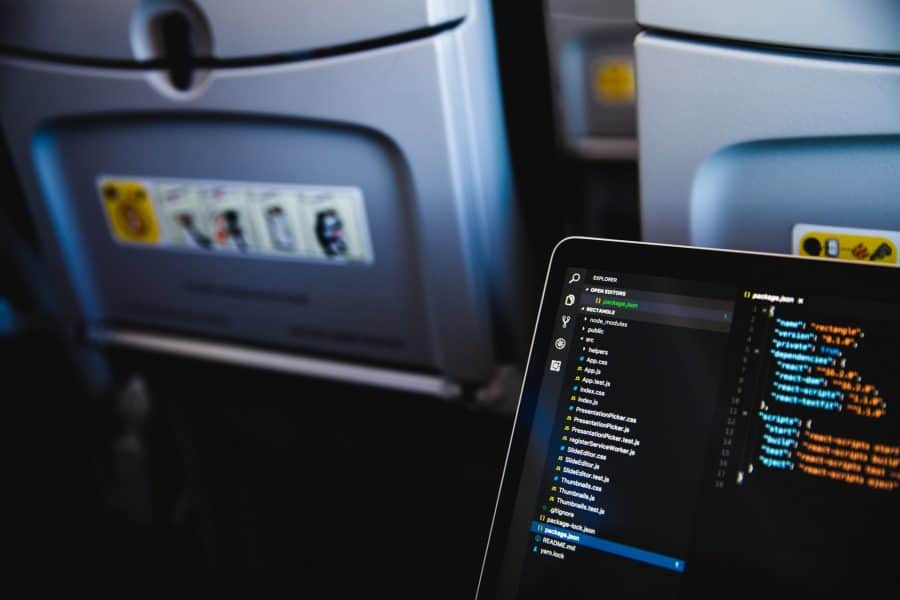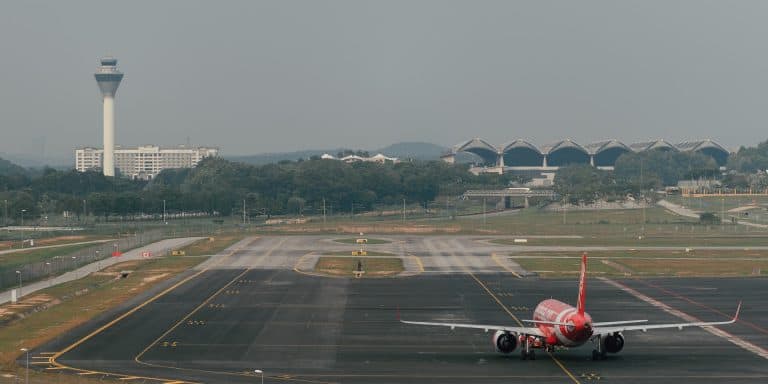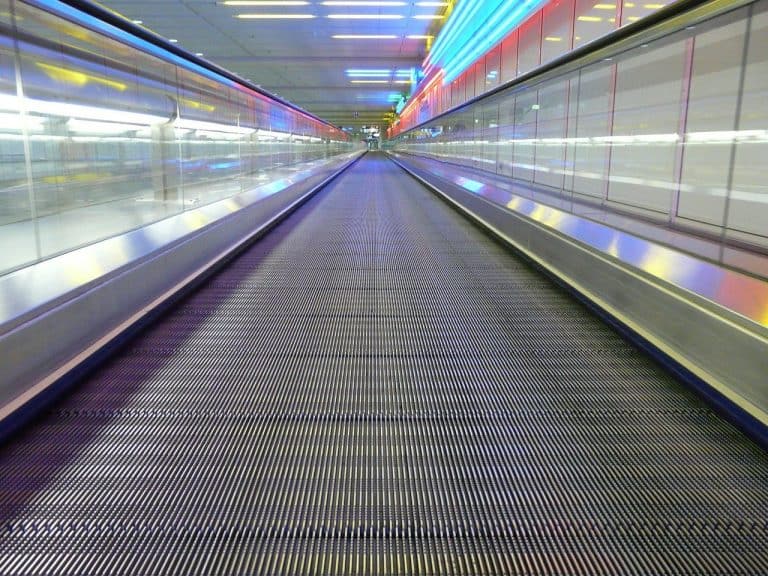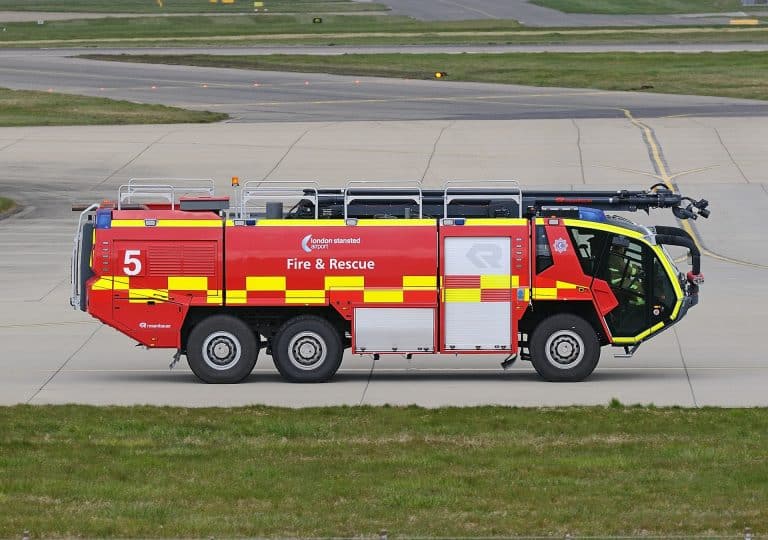How Do Airports Prepare and Deal With Extreme Weather?
Catching a flight can be stressful enough, scrambling around for your tickets and passport, queuing for security, and trying to find your gate. Now imagine all the usual anxiety involved with being in an airport when you get the news there is an impending hurricane? Terrifying stuff, so how do airports prepare and deal with hurricanes and keep the passengers safe?
This article looks at the effect severe weather has on airports (both directly and indirectly) and how they mitigate the damage.
Are airports safe during a tropical storm or hurricane?
Generally speaking, if you get the news of an impending hurricane or tropical storm you should probably try to get out of the area before the weather event occurs.
But, if you cannot leave the dangerous area and have no safe alternative accommodation, is it safe to stay in the airport?
Safe is a little subjective. High winds and rain will always bring risks and potential danger to life. However, you are likely more safe at the airport than anywhere else on the storm’s path.
Airports in areas where there is a risk of hurricanes or tornadoes etc. will likely have stronger regulations implemented during the construction.
This should mean there is a lower likelihood of:
- The building flooding.
- The storm penetrating the building and catapulting dangerous debris (such as glass and bricks) around, injuring or even killing the occupants.
Airports should also have procedures and safe locations for passengers to wait out the storm.
As long as you listen to the staff (who are trained to deal with the situation) you have as good of a chance as any to survive the storm at an airport.
Can you wait in the airport during a tropical storm or hurricane?
Airlines may cancel most if not all flights during an extreme weather event.
However, in most cases, airports will remain open in adverse weather even if no planes are using the runway.
It is advised that you stay in close contact with both the airline and the local authorities who will be able to advise what the best course of action for you is.
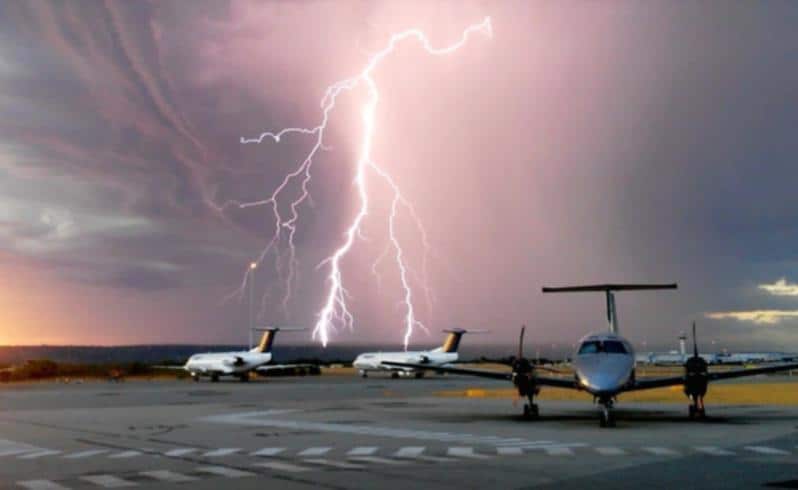
The airport should provide somewhere to wait it out if it is deemed necessary.
What protocols happen at airports before a weather event?
Thankfully, weather events such as hurricanes and tropical storms can often be predicted days in advance.
The priority of the airlines and local authorities is to evacuate as many people as possible out of the danger zone.
Both parties put together plans to ensure people get where they need to be sooner.
This gives airlines a chance to put into place the following measures:
1. Cancel affected flights
2. Evacuate aircraft grounded at the affected airport
3. Issue travel waivers
The first step is cancelling affected flights that route directly through the storm. This will lower the risk of harm to the passengers as well as the employees.
The next step is to evacuate the aircraft on the airfield before the storm arrives.
When you have assets worth hundreds of million dollars lying around, it would not be a good idea to risk having them damaged during a powerful storm.
Airlines will therefore move aircraft on the path of the storm out of harm’s way.
The airlines will then issue travel waivers. Affected passengers will get the chance to amend any affected flights (cancel or move) without having to pay any fees for rebooking.
Passengers who are proactive in getting in touch with the airlines are more likely to get a seat on an earlier flight to avoid the severe weather.
The airports themselves prepare for a large volume of passengers to turn up before the storm to try and escape. They do this by putting on more security and ground staff to help process as many people and planes as possible.
Procedures for when the storm occurs will also be drafted ready for implementation.
What protocols happen at airports during a weather event?
Technically, aircraft can still fly during any weather event. There are guidelines on what conditions are deemed safe to operate in but it is up to the pilot’s own judgment to decide whether to fly or not.
The dangers of flying during a storm are typically close to ground level. This means that the riskiest part of the journey is around taking off and landing.
The biggest factors affecting pilot’s decision on whether to fly in a storm are:
- The wind speed and direction
- Turbulent clouds
There is a maximum wind speed pilots will land or depart in. Ideally, aircraft will arrive into a headwind (flying into the wind) and depart into a tailwind (wind behind the aircraft).
Even with preferential winds, there is a limit a pilot is willing to land or depart in as sudden gusts can still throw the aircraft about and cause them to go off course.
A crosswind is very bad news for pilots as it can make it very difficult for aircraft to keep in line with the centre of the runway. Even a relatively small crosswind may cause pilots to abort the landing.
During a storm, thick and dense clouds often form. When flying through the cloud, air does not pass cleanly over the wings resulting in turbulence.
In very thick clouds with high volatile winds, the turbulence can become so severe the aircraft is tossed about injuring passengers, or even causing a crash.
Generally speaking, aircraft at cruising altitude are not affected by storms and can fly over the hurricane without too many issues.
How does the airport return to normal after a weather event?
This depends mainly on the extent of the damage the storm has caused. It can take many weeks before airports return fully back to normal.
The first job is to clear debris from the taxiways and runways to allow the operation of relief flights to bring in supplies such as food and blankets.
The taxiways and runways themselves aren?t typically damaged by storms. The most common damage is caused to the airport terminals.
These will need to be repaired before passengers can start boarding flights again. Often equipment such as the jet bridge (which is the moving connector that joins terminals to the aircraft) is out of operation.
Although out of their control, airports rely on the local infrastructure to return to normal.
Infrastructure such as water and electricity may have been damaged in the storm. These will need to be repaired before the airport can be used again commercially.
Finally, aircraft that evacuated will need to return to the airport before any outbound flights can occur.
How does severe weather affect other airports – Arrivals?
Even airports that are not getting directly hit by the storm can have a detrimental effect on their operation.
For one, the airport may need to accommodate a sudden influx in unscheduled arrivals as airlines evacuate their aircraft.
Careful planning of stand allocations is needed to accommodate the additional aircraft onto the airfield.
Although they can generally plan to a high level of precision, a small change in the schedule (such as a departure being delayed off stand) can have a big impact and potentially result in flights arriving without an available stand.
These aircraft will therefore have two options which adds complexity to the operation:
- Wait somewhere else on the airfield until a stand is available.
- Park in a remote location and then take passengers to the terminal via a bus.
Additionally, the massive flood of arrivals can cause issues with ATC (air traffic control).
Aircraft cannot all land on the runway at the same time (for obvious reasons). They are therefore delayed on their route until it is their turn to use the runway.
The methods used to delay aircraft is an article in itself. An example is having aircraft fly around in a circle one above each other, called a holding stack (diagram below).

If too many aircraft are trying to land and are required to hold, it can become unmanageable for ATC.
To avoid this from occurring, careful planning is used once a storm has been identified. Flights are staggered such that they do not turn up at the airport at the same time. This makes better use of the stands at the airport and minimizes the need to hold aircraft.
How does severe weather affect other airports – Departures?
The biggest impact is surprisingly on departing aircraft.
The airspace is split into many different areas known as sectors. Each sector has several air traffic controllers who are responsible for keeping aircraft within the sector safely separated.
When aircraft are evading severe weather they (understandably) get priority over other aircraft. However, the influx of aircraft from a certain direction means certain sectors get very busy.
Additionally, departures change their route to avoid the storm, further putting pressure on different sectors.
To stop the ATC responsible for these sectors from getting overwhelmed, restrictions on the number of aircraft that can use a sector at a time are put into place, known as the flow rate.
This means departures going in certain directions have to wait on the ground until the sector becomes quieter requiring the airlines to make a choice:
- Sit on the stand and wait for things to die down
- Wait in the runway departure queue
Waiting on the stand has the advantage that the aircraft is not burning any fuel and can easily unload passengers if they need to.
The disadvantage is if there are stand shortages, the departure may have to vacate to allow an arrival in.
The area of the runway where departures wait is known as the Runway Hold Area. The advantage of waiting in the RHA is the potential to depart quickly if the sector suddenly becomes less busy. It also keeps a much-needed stand free for an arrival.
The disadvantage is while waiting in the RHA the aircraft is burning fuel.
There is an added complication; there is a maximum time an aircraft can wait before passengers are required to be offered the chance to get off the flight. If a passenger accepts, the flight will have to turn around and unload at the gate and start all over again.
If too many routes have been restricted, the airport can completely malfunction due to the flow of departures being halted.
There can be so many aircraft in the departure queues that it blocks off key taxiways resulting in the airport becoming completely gridlocked.
This may sound a little far fetched however a similar event has occurred at an airport in the U.S. after a snow storm. A lack of coordination and compliance between the airlines and ATC resulted in passengers waiting on flights for over 4 hours as there was a mad scramble to try and leave!
More from AirportNerd
The Complete Guide to Airplane Window Shade Etiquette
Picture this. You are sitting in the most undesired seat on the airplane, the middle…
Why Do Airlines and Airports Use 24-Hour Time?
The culprit of many missed flight connections: distinguishing between 12-hour and 24-hour clocks. While most…
Why Are Airports Named After U.S. presidents?
Donald Trump has been in the news for wanting to rename Palm Beach International Airport…
Why Do Laptops Get Special Attention at Airport Security?
?Shoes off, laptops out, liquids in zip lock bags, all in separate trays!? Frequent flyers…

